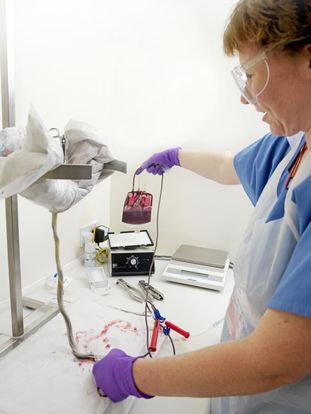30 weeks and 2 days pregnant

You will be aware of times when your baby is especially active and times when he is more quiet. There is still a lot of space for your baby to move within the uterus but it is likely that there will be a favourite spot that receives more kicks than any other.
Your baby has now developed a clear rhythm of sleeping and waking that may mimic your own or be personal to him.
Exactly when and how your baby develops a cycle of sleeping and waking before birth remains a bit of a mystery. It’s not known whether your own rhythms influence your baby’s sleep–wake cycle or whether your baby develops his own internal clock. Indeed, such a clock might be triggered in response to the small amount of light that is able to penetrate through the uterus during the last few weeks of pregnancy. It’s apparent from brain scans, however, that by this stage of pregnancy, your baby does have very separate periods of activity.
There is a clear cycle, alternating between periods of quiet rest, sleep with rapid eye movements (REM), wakefulness with activity but no eye movement, and wakefulness with lots of activity and eye movements. During this sleep–wake cycle, the baby’s actions become more co-ordinated as periods of activity are linked to rhythmical breathing and increased heart rate, and eye movements.
By this stage of pregnancy, electrical activity in your baby’s brain shows patterns reflecting periods of sleep or wakefulness. An EEG of your baby’s brain would show that the quietest period, deep sleep, takes up almost half of the time. The next most common state is REM sleep (the sleep stage during which children and adults dream). This is a time of great electrical activity within your baby’s brain. During REM sleep the baby may be quiet or making lots of movements, so it’s not possible to tell whether your baby is truly awake at this time or if he’s dreaming. Paradoxically, the least electrical activity happens when your baby is most awake – in fact less than 10 per cent of your baby’s time is spent truly awake at this stage.
The blood in your baby’s umbilical cord contains “cord blood”, which is rich in stem cells. These cells are the building blocks of organ tissue, blood, and the immune system. Some parents save these cells and store them (in a private facility at a cost) in the event that their child or another family member needs their healing benefits.
Studies have found that they are very effective in the treatment of more than 70 diseases including juvenile arthritis, cancers, heart disease, and brain injury.
Stem cells are widely used, but there is significant evidence to show that using cells from the cord blood of a sibling or other family member is more effective than using cells from an unrelated donor, or bone marrow from relatives.
Cord blood can be pricey to store. The NHS keeps a cord blood bank in which donated blood is stored, and this is used to treat patients who need it most. This means that your baby’s cord blood may have been used before your baby, or one of his siblings, needed it.

Stem cell collection from your baby’s umbilical cord is easy and pain-free, and could have life-saving benefits for your children.
Be the first to support
Be the first to share
Comment (0)
Related Blogs & Vlogs
No related events found.
Loading more...